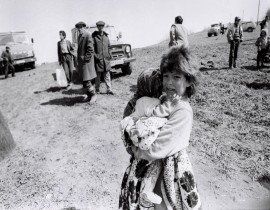Politicon.co
UN Security Council and threats to peace and security in the 21st century
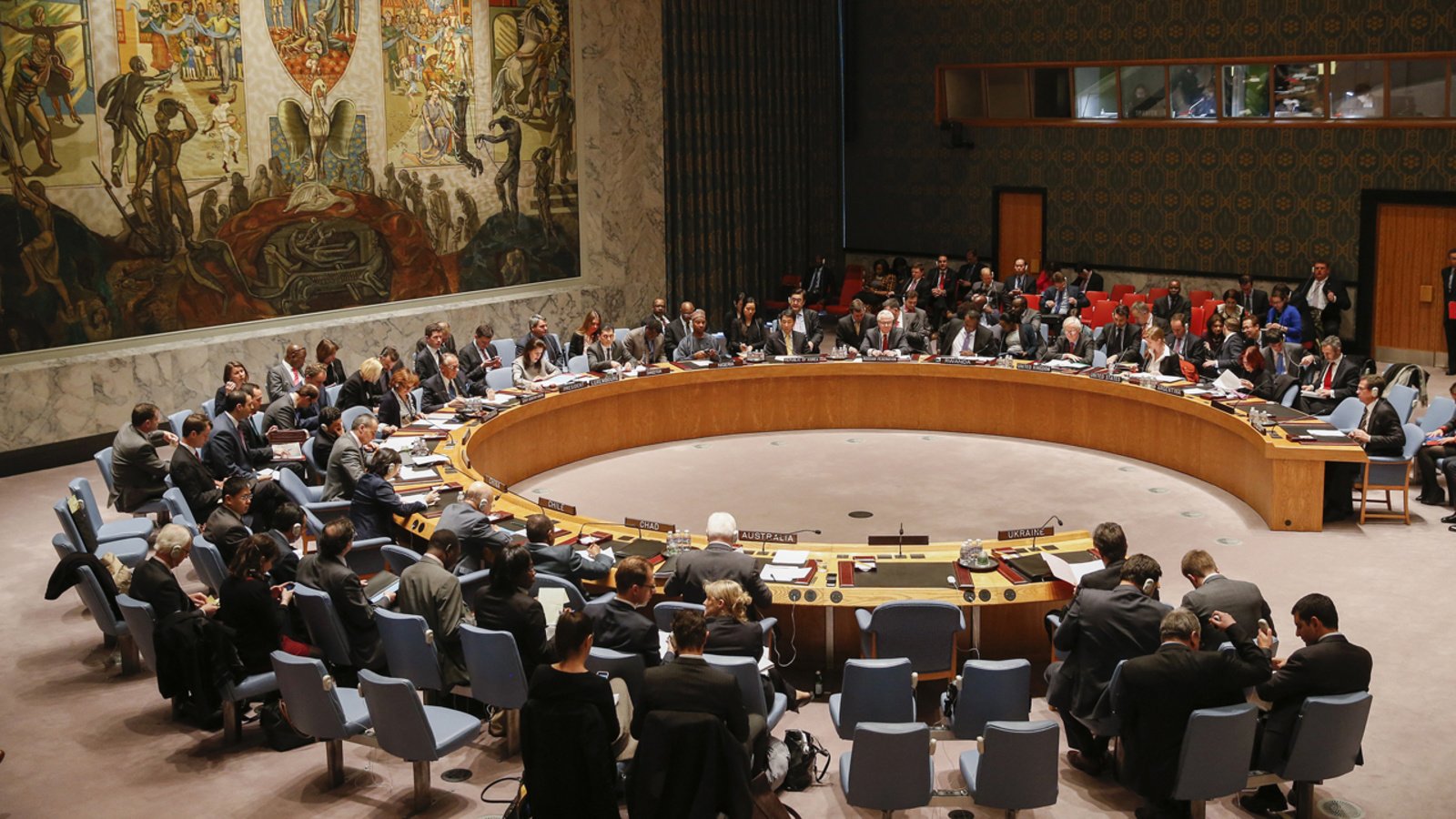
Introduction
In the contemporary world, the United Nations Security Council is increasingly becoming a news feeds hero not as the main UN body, but as a political forum, which belatedly gives assessments of various challenges to humanity and local conflicts. The multidimensional scope of threats to regional and global stability in the foreseeable future are such that states can only cope with many of these challenges together, by strengthening and properly utilizing the Council’s potential for managing global and regional security. This underlines the importance of the UN Security Council in a multipolar world.
Experts give particularly different assessments of the effectiveness of the UN Security Council and its possible reform. It is increasingly difficult to determine the place of this institution in the contemporary international political system and in the system of international law. However, despite the argument that the Security Council experiences a “serious crisis” and is unable to ensure collective security in the face of growing threats, in accordance with the UN Charter, it remains a unique international tool that actually performs the functions of prevention and settlement of conflicts. Evidence of this is the fact that by the intervention of the UN and the Security Council, it was possible to prevent sliding into a global conflict after World War II.
However, it is the Security Council that bears the primary responsibility for maintaining international peace and security and determination whether there is a threat to peace or an act of aggression. It calls on the conflict parties to resolve it peacefully and recommends methods and conditions of settlement. In some cases, the Council may resort to sanctions or even authorize the use of force in order to maintain or restore international peace and security. It must be recognized that during the globalization processes, when threats to peace arise from various areas of our society, the Council, in accordance with the UN Charter, can make decisions on measures related to the implementation of economic, political and other types of non-military action (UN Charter, 1945), as well as associated with the use of armed forces (UN Charter, 1945).
A significant advantage of the Council is that it is a permanent body, the most adequate platform for coordinating the positions of the great powers on peacekeeping, disarmament and non-proliferation. The broadest powers of the Council as the supreme regulator of international relations, its small composition, the tremendous expertise of the cooperation of the great powers within its framework allow this institution (with the strong political will and determination of its members) to make and implement crucial decisions on the most complex issues on the agenda international security.
The analysis of Council’s sufficiency to address contemporary threats will be done around three main emerging challenges in the 21st century. Firstly, I will discuss the UN crisis diplomacy through its peacekeeping and peacebuilding operations. Secondly, I will examine the effectiveness of the Security Council in arms control and non-proliferation of weapons of mass destruction on cases of Syria and Iran. Finally, recommendations will be made for reforming the Security Council.
UN Crisis Diplomacy
Modern conflicts have acquired a multi-layered and less transparent nature, and generally, they do not end with the traditional outcome - a decisive military victory of one of the parties and the transition to the post-conflict reconstruction stage. They become protracted, acquire a cyclic, uncontrollable, and poorly predicted nature. To some extent, the reason is that these processes are led by non-state actors, and moreover, they are almost unrelated with political elites. Their ultimate goal is not necessarily the formation of a new state, but it cannot be ruled out that their task (for example, the “Islamic state”) is to create uncontrolled territories - the so-called "Black holes" and in dragging into them the adjacent states.
The UN took measures to improve crisis diplomacy and created the Peacebuilding Commission, the Peacebuilding Support Office, and the Peacebuilding Fund in 2005. The task of these bodies was to strengthen the strategic cooperation of the UN crisis mechanisms in relation to conflict states and bridge the gap between the political, economic, and military aspects of anti-crisis diplomacy. At the initial stage, there were hopes that the new anti-crisis tools would become an effective complement to the peacebuilding architecture.
Almost nine of the UN peacekeeping operations had a comprehensive mandate with an active peacebuilding component. Some progress in terms of stabilizing the situation has been achieved in Burundi and Sierra Leone (2006), Guinea Bissau (2007), Central African Republic (2008), Liberia (2010) and Guinea (2011). In relation to these countries, there was closer cooperation between the Peacebuilding Commission in field operations and the Special Committee on Peacekeeping Operations of the United Nations (C-34), with the active financial support of the Peacebuilding Fund.
However, despite initial successes, the Peacebuilding Commission could not significantly alleviate the situation, because the Commission is an advisory body to the UN Security Council and has no actual impact on its decision-making process. In addition, the work of the Commission was blocked by contradictions between developing countries and the Western donors.
Modern crisis diplomacy is based on conducting political and negotiating dialogue with rival state and political partners in order to achieve a political settlement and to prevent conflict in advance. However, crisis settlement is increasingly not matching with geopolitics - examples are Syria, Afghanistan, Ukraine - since priorities relate to the interests of individual states, which further weakens the effectiveness of crisis diplomacy tool of the Security Council.
Disarmament and Non-Proliferation
According to the UN Charter, one of the goals of the Security Council is to promote the establishment and maintenance of international peace and security with the least diversion of the world's human and economic resources for the armament cause (UN Charter, 1945). In particular, the Security Council is responsible for developing plans for the creation of an arms control system to be presented to its members. Unfortunately, the issue of formulating such plans is preserved and this provision of the Charter has not yet been implemented. At the same time, the course of world events determined the thorough involvement of the Security Council as the main UN body not only in peacekeeping processes, but also in the operational regulation of armaments. Its powers are increasingly being used to encourage states to disarm and non-proliferate.
In the contemporary world, the latter circumstance is even more important because of the increased danger of the proliferation of weapons of mass destruction (WMD) among problematic regimes characterized by internal instability and systematic involvement in regional conflicts. The reality of access to WMD of these regimes and terrorist organizations increasingly becomes a destabilizing factor in international relations. The position of the permanent members of the Security Council inter alia obliges the great powers to develop joint approaches to the further proliferation of nuclear and other WMD as a challenge to global stability. The development of international events at the beginning of the XXI century. confirmed that active cooperation in this area between the permanent members of the Council is not only possible, but necessary. Based on these common interests, an informal anti-proliferation coalition has developed.
The Security Council unanimously qualified the proliferation of all types of WMD as a “threat to international peace and security” back in 1992 (UN Document, 1992). In following years, the Council has repeatedly adopted resolutions related to serious challenges to non-proliferation regimes. In practice, when states succeeded in unifying their efforts on developing common approaches, cooperating coherently and purposefully, coercive actions had a positive impact.
Syria
In 2014, with the leading role of the Security Council, the chemical weapons of Syria were destroyed. This unique and large-scale international operation on radical disarmament was carried out in an unprecedentedly short time, under the conditions of an ongoing civil war. It is of fundamental importance that the successful completion of the chemical demilitarization of Syria was achieved by the joint actions of the states in full compliance with international legal norms, the principles of the UN Charter and on the basis of equality and mutual accommodation. It was a real contribution to the consolidation of collective efforts to strengthen the central coordinating role of the Security Council.
It should be emphasized that in relation to Syria, the Security Council for the first time took on specific disarmament functions, including organization and conduct of a large-scale international maritime operation to remove components and precursors of chemical weapons from the country, ensuring the safety of international inspectors, and various measures to support the activities of the Organization for the Prohibition of Chemical Weapons (OPCW). The Council also participated in monitoring the process of destruction of Syrian chemical potential together with the OPCW.
Testing the accelerated disarmament model with the direct assistance of the UN Security Council is of fundamental importance, first of all, in terms of the implementation of the Chemical Weapons Convention (CWC) , as well as for the WMD nonproliferation regimes in the world, since it concerns the destruction of large arsenals of chemical warfare in one of the most unstable regions of the world. This is an example of a successful and peaceful solution to the regional disarmament problem. It shows that multilateral efforts can make a big difference and the international community can be mobilized to solve problems of such scale. It is important that a precedent was created for the destruction of WMD particularly in a state with the deep involvement of the UN Security Council in this process. The Syrian model may be in demand if it is necessary to carry out a similar international operation in a state with a high degree of internal instability and conflict.
Iran
In 2015, with the assistance of the Security Council, serious progress was made on the problem of Iranian nuclear program (INP). Several issues related to ensuring the exclusively peaceful nature of Iran’s nuclear activities have been settled. The Council unanimously adopted Resolution 1737, based on Article 41 of the UN Charter, and imposed sanctions on Iranian uranium enrichment and chemical reprocessing, as well as projects related to a heavy-water reactor and the production of nuclear weapons delivery vehicles (UN Document, 2006). The Security Council has also established a subsidiary body, the Sanctions Committee (Committee 1737).The Committee’s mandate extends to the implementation of restrictive measures imposed by Resolutions 1737 (2006), 1747 (2007), 1803 (2008) and 1929 (2010).
The UN Security Council’s two-track approach combined sanctions (aimed at hindering Iran’s transition to creation nuclear weapons capabilities) and “positive incentives” designed to increase Tehran’s interest in cooperation with the International Atomic Energy Agency (IAEA) and fulfilling membership obligations in the Treaty on the Non-Proliferation of Nuclear Weapons (NPT), IAEA and UN. Considering the experience of the INP, an unofficial negotiation mechanism was created within the Security Council consisting of the UK, China, Russia, the USA and France, as well as Germany - known as the “Six International Mediators”, or the “P5+1” group. Thus, the situation was successfully transferred to the negotiation track of a political and diplomatic settlement. Resolutions adopted by the Security Council on INP have strengthened the negotiating position of “international mediators”.
The measures taken by the Council against Iran played an important role in political containment of those politicians who wanted to acquire nuclear weapons. The result of a coherent strategy of the world community was the implementation of IAEA safeguards and the Joint Comprehensive Action Plan (JCAP) by Iran. Even though today this agreement is de-facto buried due to the position of the Trump administration, the Action Plan itself serves as a perfect example of the effectiveness of the coordinated work of the Council.
Possible Reforms of the Security Council
Improving the effectiveness of the Security Council and reform of the whole UN are actively debated currently. The interests of various groups of member states are sharply clashing. The first and last attempt to reform the UN structures occurred in 1963 when amendments to articles 23, 27 and 61 of the UN Charter were adopted, which increased the number of members of the Security Council from 11 to 15 and on all issues, except procedural ones, decisions were made by nine votes with the coinciding votes of five permanent members of the Council. Nowadays, in a rapidly changing world with its new influence centers, the 1963 amendments are a bit inadequate and outdated. Created at the beginning of the XXI century, the High-level Panel on Threats, Challenges and Change also emphasized in its report the necessity of the Security Council reform, the main purpose of which should be "increasing both the effectiveness and credibility of the Council and, most importantly, to strengthen its ability and willingness to act in the face of threats" (UN Document, 2007).
Considering these, the reform should be based on the concept of improving the existing tools of the UN Security Council. For instance, in order to eliminate the emerging threats of large-scale violence, it is necessary to review the military component of the UN: the allocation at its disposal of contingents of national forces, particularly rapid reaction forces, which requires closer military cooperation, primarily of permanent members of the Council. Noteworthy is the idea of strengthening the potential of the UN Military Staff Committee (MSC) (Luck, 2006), giving it a proactive role. For example, in conducting offensive peace enforcement operations, non-proliferation and disarmament, as well as in the field of restricting the international arm trade, complying with the arms embargo, combating terrorism and piracy, etc. The revitalization of the MSC is important in the field of peacekeeping, as well as for the coercive measures in the of implementing the NPT, CWC and other disarmament treaties. Consequently, the mandate of the MSC should be expanded and include its participation in establishing contacts between the UN Security Council and international partnerships.
Another perspective direction can be the use of effective means of enforcement on violators of international legal norms of disarmament and non-proliferation of WMD, and to prevent terrorists from gaining access to it. It is necessary to specify the international responsibility that the state bears for such violations, including coercive measures arising from Chapter VII of the UN Charter. The necessity of development additional standards directly follows from the Security Council's Resolution 1887. It is necessary to tighten responsibility for gross violations of such norms (zero tolerance). This refers to ensuring strict compliance with the Council's resolutions adopted on the basis of Chapter VII of the UN Charter and relating to the fulfillment by states of obligations undertaken under disarmament treaties. It is important to ensure that non-compliance with such resolutions qualifies as totally unacceptable behavior that entails unavoidable consequences for violators (tightening of sanctions, restriction of rights, for example, deprivation of the right to speak at sessions of the General Assembly and other UN forums). In the fight against impunity in this context, the International Criminal Court could be useful, by interacting with the Council within their respective mandates.
Moreover, considerable opportunities have been created on the counter-terrorism track within the UN framework - the time has come to take full advantage of them. Efforts are demanded to reach an agreement between the great powers within the framework of the Council on timely and adequate response to severely dangerous terrorist acts.
In conditions of growing extremism and the spread of terrorism around the world, the increase on their negative impact on international security, it seems expedient to allocate national anti-terrorism forces to the UN Security Council and ensure the UN forces an offensive mandate including conduct intelligence operations, implement preventive measures, use of drones, etc. In this context, it is particularly necessary to solve the problem of legitimization of use of drones (UAVs) in international counter-terrorism operations. The reanimation of the MSC is particularly useful in terms of strengthening the credibility of the Security Council itself, its ability to withstand the challenges of the 21st century and find multilateral solutions to the growing problems of managing international security.
Conclusion
Recognizing the achievements of the UN Security Council, it would be foolish not to consider its difficulties and failures, as well as their impact on the international reputation of this institution. The problems themselves do not threaten the existence of the system, but their real danger is more gradual. When a growing number of failures reach a “critical level” and cast doubt on the credibility of the system as a whole, at that moment there is a real threat that the UN may lose its unique status and therefore reforms are strategically crucial for it.
To conclude, the discussion on sufficiency of the UN Security Council’s capabilities to address the global threats of tomorrow might be endless. The Council has various tools inter alia resolutions, sanctions, mechanisms, and powerful influence on the shaping of the international order. However, emerging non-conventional threats with new types of asymmetric and hybrid wars, complicates and completely changes the notion of security, which is a challenge not only for the Security Council, but for the global order.
References:
1) Convention on the Prohibition of the Development, Production, Stockpiling and Use of Chemical Weapons and on their Destruction. entered into force on April 29, 1997.
2) Luck E.C. (2006). UN Security Council: Practice and Promise. New York, NY: Routledge. p. 26
3) United Nations (1945, October 24), Charter of the United Nations, Chapter V, Article 26. Retrieved from: https://legal.un.org/repertory/art26.shtml
4) United Nations (1945, October 24), Charter of the United Nations, Chapter VII, Article 41. Retrieved from: http://legal.un.org/repertory/art41.shtml
5) United Nations (1945, October 24), Charter of the United Nations, Chapter VII, Article 42. Retrieved from: http://legal.un.org/repertory/art42.shtml
6) UN Document (1992, January 31), Overview of Security Council Meeting Records, S/PV.3046. Retrieved from: https://www.securitycouncilreport.org/atf/cf/{65BFCF9B-6D27-4E9C-8CD3-CF6E4FF96FF9}/RO SPV 3046.pdf
7) UN Document (2006, December 23). UN Security Council Resolution 1737, S/RES/1737 (2006). Retrieved from: https://www.undocs.org/S/RES/1737 (2006)
8) UN Document (2004, December 2). Article 14, Follow-up to the outcome of the Millennium Summit, A/59/565. Retrieved from: https://undocs.org/en/A/59/565
About the author:
Ismayil Ahmadov is currently studying at Master of International Security program of Sciences Po university. The focus of his studies and research is in the areas of intelligence and national security, foreign policy analysis and the EU public affairs. Prior to Sciences Po he graduated with honors from Baku State University. Ismayil also had an internship at the UNDP Office in Azerbaijan at the Support in Implementation of National SDG Strategy Department.
![]()
- TAGS :
- UN
- Security Council
- TOPICS :
- Security

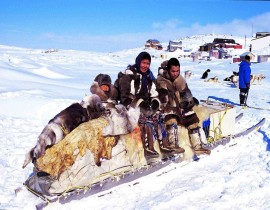
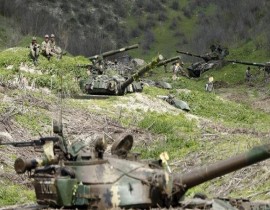
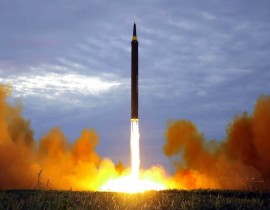
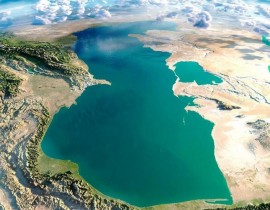
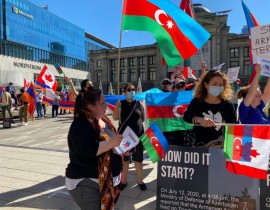
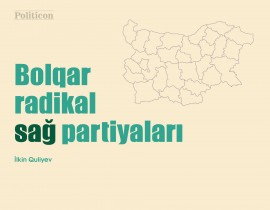
jpg-1599133320.jpg)
